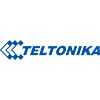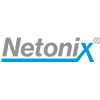TELTONIKA 4G/LTE Cat M1/Cat NB1, NB2/EGPRS , Dual SIM, Industrial NB-IoT Gateway (TRB256)
Connectivity: 4G/LTE Cat M1/Cat NB1, NB2/EGPRS | 450 MHz Band for Greater LTE Signal Penetration and Increased Coverage | Dual SIM | Interfaces: Ethernet, I/Os, and Serial (RS232, RS485) interfaces with 16-pin terminal block
| Price: * | For orders (total sum): |
| 124.00$ | >0$ |
| Contact for better prices | >500$ |
| >1000$ | |
| >5000$ | |
| >10000$ | |
|
In stock <10 pcs
|
|
Features:
The TRB256 is an industrial 4G LTE NB-IoT gateway designed to be applied to a broad range of IoT solutions. The device is equipped with multiple WAN interfaces, such as I/Os, RS232, RS485, and an Ethernet port, additionally boasting dual SIM functionality for continuous connectivity. This industrial-grade gateway also supports the 450 MHz frequency band, offering superior LTE signal penetration compared to standard frequencies, making it an optimal choice for a diverse range of M2M applications.
Specification:
Mobile
Mobile module: 4G LTE Cat M1 up to 588 DL/ 1119 UL kbps, Cat NB2 up to 127 DL/158.5 UL kbps, Cat NB1 up to 32 DL/70 UL kbps (simultaneous operation of cellular and GNSS connectivity is not supported)
3GPP Release: Release 14
SIM switch: 2 SIM cards, auto-switch cases: weak signal, data limit, SMS limit, on roaming, no network, network denied, data connection fail
Status: IMSI, ICCID, operator, operator state, data connection state, network type, bandwidth, connected band, signal strength (RSSI), SINR, RSRP, RSRQ, EC/IO, RSCP, data sent/received, LAC, TAC, cell ID, ARFCN, UARFCN, EARFCN, MCC, and MNC
SMS: SMS status, SMS configuration, send/read SMS via HTTP POST/GET, EMAIL to SMS, SMS to EMAIL, SMS to HTTP, SMS to SMS, scheduled SMS, SMS autoreply, SMPP
Black/White list: Operator black/white list (by country or separate operators)
Band management: Band lock, Used band status display
SIM idle protection service: When working with devices with two SIM slots, the one not currently in use will remain idle until the device switches to it, meaning that no data is used on the card until then
SIM PIN code management: SIM PIN code management enables setting, changing, or disabling the SIM card's PIN
APN: Auto APN
Bridge: Direct connection (bridge) between mobile ISP and device on LAN
Passthrough: Gateway assigns its mobile WAN IP address to another device on LAN
Ethernet
Ethernet: 1 x ETH port, 10/100 Mbps, compliance with IEEE 802.3, IEEE 802.3u, 802.3az standards, supports auto MDI/MDIX crossover
Network
Routing: Static routing, Dynamic routing (BGP, OSPF v2, RIP v1/v2, EIGRP, NHRP), Policy based routing
Network protocols: TCP, UDP, IPv4, IPv6, ICMP, NTP, DNS, HTTP, HTTPS, FTP, SMTP, SSL v3, TLS, ARP, VRRP, PPP, PPPoE, UPNP, SSH, DHCP, Telnet, SMPP, SNMP, MQTT, Wake On Lan (WOL), VXLAN
VoIP passthrough support: H.323 and SIP-alg protocol NAT helpers, allowing proper routing of VoIP packets
Connection monitoring: Ping Reboot, Wget Reboot, Periodic Reboot, LCP and ICMP for link inspection
Firewall: Port forward, traffic rules, custom rules, TTL target customisation
Firewall status page: View all your Firewall statistics, rules, and rule counters
Ports management: View device ports, enable and disable each of them, turn auto-configuration on or off, change their transmission speed, and so on
Network topology: Visual representation of your network, showing which devices are connected to which other devices
Hotspot: Captive portal (hotspot), internal/external Radius server, Radius MAC authentication, SMS authorisation, SSO authentication, internal/external landing page, walled garden, user scripts, URL parameters, user groups, individual user or group limitations, user management, 9 default customisable themes and optionality to upload and download customised hotspot themes
DHCP: Static and dynamic IP allocation, DHCP relay, DHCP server configuration, status, static leases: MAC with wildcards
QoS / Smart Queue Management (SQM): Traffic priority queuing by source/destination, service, protocol or port, WMM, 802.11e
DDNS: Supported >25 service providers, others can be configured manually
DNS over HTTPS: DNS over HTTPS proxy enables secure DNS resolution by routing DNS queries over HTTPS
Network backup: VRRP, Wired options, each of which can be used as an automatic Failover, Mobile
SSHFS: Possibility to mount remote file system via SSH protocol
Traffic Management: Real-time monitoring, wireless signal charts, traffic usage history
Security
Authentication: Pre-shared key, digital certificates, X.509 certificates, TACACS+, Internal & External RADIUS users authentication, IP & login attempts block, time-based login blocking, built-in random password generator
Firewall: Preconfigured firewall rules can be enabled via WebUI, unlimited firewall configuration via CLI, DMZ, NAT, NAT-T, NAT64
Attack prevention: DDOS prevention (SYN flood protection, SSH attack prevention, HTTP/HTTPS attack prevention), port scan prevention (SYN-FIN, SYN-RST, X-mas, NULL flags, FIN scan attacks)
VLAN: Tag-based VLAN separation
Mobile quota control: Mobile data limit, customizable period, start time, warning limit, phone number
WEB filter: Blacklist for blocking out unwanted websites, Whitelist for specifying allowed sites only
Access control: Flexible access control of SSH, Web interface, CLI and Telnet
SSL certificate generation: Let's Encrypt and SCEP certificate generation methods
VPN
OpenVPN: Multiple clients and a server can run simultaneously, 27 encryption methods
OpenVPN Encryption: DES-CBC 64, RC2-CBC 128, DES-EDE-CBC 128, DES-EDE3-CBC 192, DESX-CBC 192, BF-CBC 128, RC2-40-CBC 40, CAST5-CBC 128, RC2-64-CBC 64, AES-128-CBC 128, AES-128-CFB 128, AES-128-CFB1 128, AES-128-CFB8 128, AES-128-OFB 128, AES-128-GCM 128, AES-192-CFB 192, AES-192-CFB1 192, AES-192-CFB8 192, AES-192-OFB 192, AES-192-CBC 192, AES-192-GCM 192, AES-256-GCM 256, AES-256-CFB 256, AES-256-CFB1 256, AES-256-CFB8 256, AES-256-OFB 256, AES-256-CBC 256
IPsec: XFRM, IKEv1, IKEv2, with 14 encryption methods for IPsec (3DES, DES, AES128, AES192, AES256, AES128GCM8, AES192GCM8, AES256GCM8, AES128GCM12, AES192GCM12, AES256GCM12, AES128GCM16, AES192GCM16, AES256GCM16)
GRE: GRE tunnel, GRE tunnel over IPsec support
PPTP, L2TP: Client/Server instances can run simultaneously, L2TPv3, L2TP over IPsec support
Stunnel: Proxy designed to add TLS encryption functionality to existing clients and servers without any changes in the program’s code
DMVPN: Method of building scalable IPsec VPNs, Phase 2 and Phase 3 and Dual Hub support
SSTP: SSTP client instance support
ZeroTier: ZeroTier VPN client support
WireGuard: WireGuard VPN client and server support
Tinc: Tinc offers encryption, authentication and compression in it's tunnels. Client and server support.
BACNET
Supported modes: Router
Supported connection types: RS485, TCP
Configuration options: Support for multiple BACnet/IP interfaces, Network number assignment, Preconfigured BDT entries for BBMD (BACnet Broadcast Management Device)
OPC UA
Supported modes: Client, Server
Supported connection types: TCP
MODBUS
Supported modes: Server, Client
Supported connection types: RTU (RS232, RS485), TCP
Custom registers: MODBUS TCP custom register block requests, which read/write to a file inside the router, and can be used to extend MODBUS TCP Client functionality
Supported data formats: 8-bit: INT, UINT; 16-bit: INT, UINT (MSB or LSB first); 32-bit: float, INT, UINT (ABCD (big-endian), DCBA (little-endian), CDAB, BADC), HEX, ASCII
Date To Sserver
Protocol: HTTP(S), MQTT, Azure MQTT, Kinesis
Data to server: Extract parameters from multiple sources and different protocols, and send them all to a single server; Custom LUA scripting, allowing scripts to utilize the router's Data to server feature
MQTT Gateway
Modbus MQTT Gateway: Allows sending commands and receiving data from MODBUS Server through MQTT broker
DNP3
Supported modes: Station, Outstation
Supported connection types: RS232, RS485, TCP
DLMS
DLMS Support: DLMS - standard protocol for utility meter data exchange. Support trough serial and TCP
Supported modes: Client
Supported connection types: RS232, RS485, TCP
API
Teltonika Networks Web API (beta) support: Expand your device's possibilities by using a set of configurable API endpoints to retrieve or change data. For more information, please refer to this documentation: https://developers.teltonika-networks.com
Monitoring & Management
WEB UI: HTTP/HTTPS, status, configuration, FW update, CLI, troubleshoot, multiple event log servers, firmware update availability notifications, event log, system log, kernel log, Internet status
FOTA: Firmware update from server, automatic notification
SSH: SSH (v1, v2)
SMS: SMS status, SMS configuration, send/read SMS via HTTP POST/GET
Call: Reboot, Status, Mobile data on/off, Output on/off, answer/hang-up with a timer
TR-069: OpenACS, EasyCwmp, ACSLite, tGem, LibreACS, GenieACS, FreeACS, LibCWMP, Friendly tech, AVSystem
MQTT: MQTT Broker, MQTT publisher
SNMP: SNMP (v1, v2, v3), SNMP Trap, Brute force protection
JSON-RPC: Management API over HTTP/HTTPS
RMS: Teltonika Remote Management System (RMS)
IoT Platforms
ThingWorx: Allows monitoring of: WAN Type, WAN IP, Mobile Operator Name, Mobile Signal Strength, Mobile Network Type
Cumulocity - Cloud of Things: Allows monitoring of: Device Model, Revision and Serial Number, WAN Type and IP, Mobile Cell ID, ICCID, IMEI, Connection Type, Operator, Signal Strength. Has reboot and firmware upgrade actions
Azure IoT Hub: Can be configured with Data to Server to send all the available parameters to the cloud. Has Direct method support which allows to execute RutOS API calls on the IoT Hub. Also has Plug and Play integration with Device Provisioning Service that allows zero-touch device provisioning to IoT Hubs
AWS IoT Core: Utility to interact with the AWS cloud platform. Jobs Support: Call the device's API using AWS Jobs functionality
System Characteristics
CPU: Mediatek, 580 MHz, MIPS 24KEc
RAM: 128 MB
FLASH storage: 16 MB
Firmware / Configuration
WEB UI: Update FW from file, check FW on server, configuration profiles, configuration backup
FOTA: Update FW
RMS: Update FW/configuration for multiple devices at once
Keep settings: Update FW without losing current configuration
Factory settings reset: A full factory reset restores all system settings, including the IP address, PIN, and user data to the default manufacturer's configuration
Firmware Customisation
Operating system: RutOS (OpenWrt based Linux OS)
Supported languages: Busybox shell, Lua, C, C++
Development tools: SDK package with build environment provided
GPL customization: You can create your own custom, branded firmware and web page application by changing colours, logos, and other elements in our firmware to fit your or your clients’ needs
Package Manager: The Package Manager is a service used to install additional software on the device
Location Tracking
GNSS: GPS. (GLONASS, BeiDou, Galileo and QZSS - under development); (simultaneous operation of GNSS and cellular connectivity is not supported)
Coordinates: GNSS coordinates via WebUI, SMS, TAVL, RMS
NMEA: NMEA 0183
NTRIP: NTRIP protocol (Networked Transport of RTCM via Internet Protocol)
Server software: Supported server software TAVL, RMS
Geofencing: Configurable multiple geofence zones
Serial
RS232: Terminal block connector: TX, RX, RTS, CTS
RS485: Terminal block connector: D+, D-, R+, R- (2 or 4 wire interface)
Serial functions: Console, Serial over IP, Modem, MODBUS gateway, NTRIP Client
Input / Output
Input: 3x Configurable Digital Inputs, 0 - 6 V detected as logic low, 8 - 30 V detected as logic high, 1x Analog input (0 - 30 V)
Output: 3x Configurable Digital Outputs, Open collector output, max output 30 V, 300 mA
Events: Email, RMS, SMS
I/O juggler: Allows to set certain I/O conditions to initiate event
Power
Connector: 2-pin in 16-pin industrial terminal block
Input voltage range: 9 – 30 VDC, reverse polarity protection, surge protection +/-1 kV 50 µs max
Power consumption: Idle: <2 W, Max: <3.5 W
Physical Interfaces
Ethernet: 1 x RJ45 port, 10/100 Mbps
I/O’s: 3 x Configurable digital I/O in 16-pin terminal block
Status LEDs: 3 x connection status LEDs, 3 x connection strength LEDs, 1 x power LED, 1 x Eth port status LED
SIM: 2 x SIM slots (Mini SIM – 2FF), 1.8 V/3 V, double stacked SIM tray
Power: 1 x 16-pin terminal block
Antennas: 1 x SMA connector for LTE, 1 x SMA connector for GNSS
RS232: 4-pin in 16-pin terminal block (TX, RX, RTS, CTS)
RS485: 4-pin in 16-pin terminal block (D+, D-, R+, R-)
Reset: Reboot/User default reset/Factory reset button
Physical Specification
Casing material: Aluminium housing
Dimensions (W x H x D): 83 x 25 x 74.2 mm
Weight: 165 g
Mounting options: DIN rail, wall mount, flat surface (all require additional kit)
Operating Environment
Operating temperature: -40 °C to 75 °C
Operating humidity: 10% to 90% non-condensing
Ingress Protection Rating: IP30
Regulatory & Type Approvals
Regulatory: CE, UKCA, EAC, RCM, CB, WEEE
EMC Emissions & Immunity
Standards:
EN 55032:2015 + A11:2020 + A1:2020
EN 55035:2017 + A11:2020
EN IEC 61000-3-2: 2019 + A1:2021
EN 61000-3-3: 2013 + A1:2019 + A2:2021
EN 301 489-1 V2.2.3
EN 301 489-19 V2.2.1
EN 301 489-52 V1.2.1
ESD: EN 61000-4-2:2009
Radiated Immunity: EN IEC 61000-4-3:2020
EFT: EN 61000-4-4:2012
Surge Immunity (AC Mains Power Port): EN 61000-4-5:2014 +A1:2017
CS: EN 61000-4-6:2014
DIP: EN 61000-4-11:2020
RF
Standards:
EN 301 908-1 V15.2.1
EN 301 908-13 V13.2.1
EN 303 413 V1.2.1
Safety
Standards:
CE: EN IEC 62368-1:2020 + A11:2020, EN IEC 62311:2020
RCM: AS/NZS 62368.1:2022
CB: IEC 62368-1:2018
Standard package
TRB256 Gateway
16-pin terminal block
1 x hex key
QSG (Quick Start Guide)
Packaging box
























